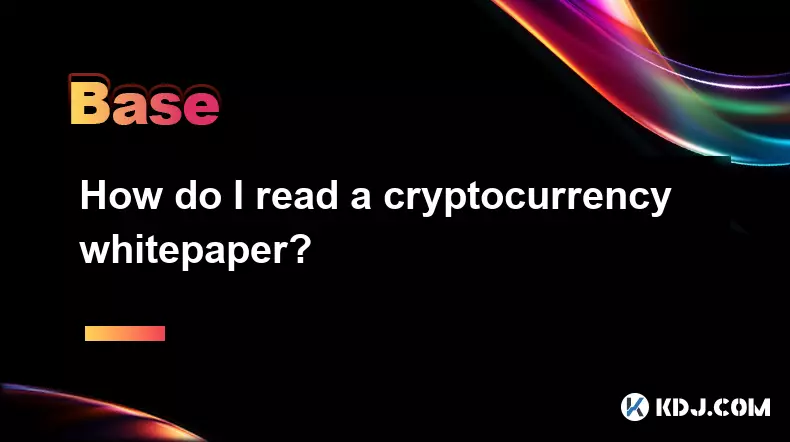-
 bitcoin
bitcoin $109523.663807 USD
-0.13% -
 ethereum
ethereum $4019.526508 USD
2.06% -
 tether
tether $1.000482 USD
0.00% -
 xrp
xrp $2.776815 USD
0.18% -
 bnb
bnb $958.942396 USD
0.12% -
 solana
solana $204.294698 USD
3.84% -
 usd-coin
usd-coin $0.999693 USD
0.00% -
 dogecoin
dogecoin $0.232115 USD
2.09% -
 tron
tron $0.338028 USD
0.84% -
 cardano
cardano $0.790920 USD
1.50% -
 hyperliquid
hyperliquid $44.871443 USD
5.60% -
 ethena-usde
ethena-usde $1.000322 USD
0.04% -
 chainlink
chainlink $21.034165 USD
2.60% -
 avalanche
avalanche $28.794831 USD
-0.54% -
 stellar
stellar $0.360466 USD
1.24%
What Leads to Accepting Risk in a Company?
Organizations' risk acceptance is influenced by various factors, including leadership's risk appetite, industry context, regulatory landscape, organizational culture, risk management capabilities, financial resources, and reward systems.
Oct 16, 2024 at 03:02 pm

Organizations often face decisions that involve a degree of risk. Accepting risk can be crucial for driving growth, innovation, and competitiveness. However, it is essential to understand the factors that influence organizations' willingness to accept risk.
1. Leadership and Risk AppetiteThe risk tolerance of an organization is largely shaped by its leadership. CEOs and senior executives set the tone for risk-taking by defining the organization's risk appetite, which is the level of risk they are willing to accept to achieve strategic goals. A high-risk appetite encourages employees to pursue innovative ideas and projects, while a conservative approach favors stability over growth.
2. Industry and Competitive LandscapeThe industry in which an organization operates can influence its risk appetite. Companies in highly dynamic and competitive industries, such as technology and entertainment, may be more inclined to take risks to stay ahead of competitors. Conversely, organizations in stable and regulated industries, such as utilities and banking, tend to have lower risk tolerances to ensure compliance and customer confidence.
3. Regulatory EnvironmentThe regulatory landscape can impact an organization's risk acceptance. Strict regulations can limit the types of risks an organization can undertake, while a lenient regulatory environment may encourage greater risk-taking. Companies operating in jurisdictions with robust governance and enforcement mechanisms typically have a more cautious approach to risk.
4. Organizational CultureThe culture of an organization plays a significant role in determining its risk appetite. A culture that values innovation, experimentation, and learning fosters a higher tolerance for risk. On the other hand, a culture that emphasizes risk avoidance and conservatism may discourage employees from taking calculated risks.
5. Risk Management CapabilitiesThe effectiveness of an organization's risk management capabilities can influence its perception of risk. Companies with a robust risk management system, including well-defined processes, tools, and metrics, are better equipped to assess and mitigate risks, which can increase their appetite for risk.
6. Financial ResourcesAn organization's financial resources can impact its risk tolerance. Companies with ample financial resources may be more willing to accept risks because they have a greater capacity to absorb potential losses. Conversely, organizations with limited financial resources may be more conservative in their risk-taking to avoid financial distress.
7. Reward SystemsThe reward systems within an organization can influence risk-taking behavior. Incentives and bonuses based on risk-taking can encourage employees to take on more risk, while penalties for risk failures can discourage risk-taking.
ConclusionAccepting risk is a complex decision that involves a careful assessment of multiple factors. From leadership and industry dynamics to cultural norms and risk management capabilities, a variety of influences shape an organization's willingness to embrace risk. Understanding these factors is crucial for organizations to make informed decisions, balance risk and reward, and drive sustainable growth and innovation.
Disclaimer:info@kdj.com
The information provided is not trading advice. kdj.com does not assume any responsibility for any investments made based on the information provided in this article. Cryptocurrencies are highly volatile and it is highly recommended that you invest with caution after thorough research!
If you believe that the content used on this website infringes your copyright, please contact us immediately (info@kdj.com) and we will delete it promptly.
- Ethereum Price Crash Concerns: Navigating the Volatility
- 2025-09-27 16:45:11
- Bitcoin's Bull Flag and FVG: Decoding the Crypto Crystal Ball
- 2025-09-27 16:25:14
- Ozak AI's $OZ Token: Riding the AI & Blockchain Profit Surge
- 2025-09-27 16:25:14
- Remittix Token Presale: CertiK Verification and PayFi Innovation
- 2025-09-27 16:30:00
- XRP Chart Signal Sparks Price Rally Buzz: Is a Breakout Imminent?
- 2025-09-27 16:45:11
- Vitalik, Chat Control, and Privacy Security: A Balancing Act
- 2025-09-27 16:30:00
Related knowledge

What are some common methods of cryptocurrency market manipulation?
Sep 27,2025 at 02:55am
Wash Trading and Its Impact on Market Perception1. Wash trading involves an individual or entity simultaneously buying and selling the same cryptocurr...

How do I read a cryptocurrency whitepaper?
Sep 27,2025 at 05:54am
Understanding the Structure of a Cryptocurrency Whitepaper1. Begin by identifying the executive summary, which outlines the project’s core vision and ...

Can I recover lost cryptocurrency?
Sep 25,2025 at 08:18am
Understanding the Nature of Cryptocurrency Loss1. Cryptocurrency operates on decentralized networks, meaning there is no central authority to reverse ...

How do I choose a cryptocurrency investment strategy?
Sep 27,2025 at 03:55pm
Understanding Risk Tolerance in Crypto Investing1. Assessing personal risk tolerance is a foundational step when entering the cryptocurrency market. V...

How can I earn passive income from cryptocurrency?
Sep 23,2025 at 10:18am
Staking Cryptocurrencies for Regular Returns1. Many blockchain networks operate on a proof-of-stake (PoS) consensus mechanism, allowing users to earn ...

What are gas fees in cryptocurrency transactions?
Sep 26,2025 at 02:00am
Understanding Gas Fees in Blockchain Transactions1. Gas fees are payments made by users to compensate for the computing energy required to process and...

What are some common methods of cryptocurrency market manipulation?
Sep 27,2025 at 02:55am
Wash Trading and Its Impact on Market Perception1. Wash trading involves an individual or entity simultaneously buying and selling the same cryptocurr...

How do I read a cryptocurrency whitepaper?
Sep 27,2025 at 05:54am
Understanding the Structure of a Cryptocurrency Whitepaper1. Begin by identifying the executive summary, which outlines the project’s core vision and ...

Can I recover lost cryptocurrency?
Sep 25,2025 at 08:18am
Understanding the Nature of Cryptocurrency Loss1. Cryptocurrency operates on decentralized networks, meaning there is no central authority to reverse ...

How do I choose a cryptocurrency investment strategy?
Sep 27,2025 at 03:55pm
Understanding Risk Tolerance in Crypto Investing1. Assessing personal risk tolerance is a foundational step when entering the cryptocurrency market. V...

How can I earn passive income from cryptocurrency?
Sep 23,2025 at 10:18am
Staking Cryptocurrencies for Regular Returns1. Many blockchain networks operate on a proof-of-stake (PoS) consensus mechanism, allowing users to earn ...

What are gas fees in cryptocurrency transactions?
Sep 26,2025 at 02:00am
Understanding Gas Fees in Blockchain Transactions1. Gas fees are payments made by users to compensate for the computing energy required to process and...
See all articles









































































